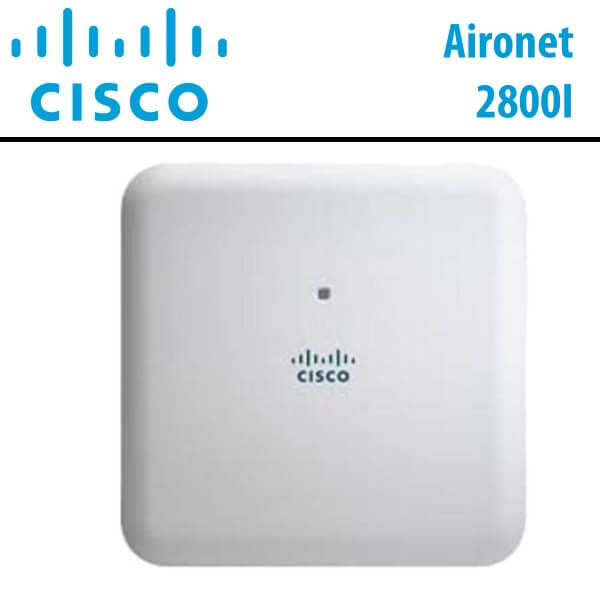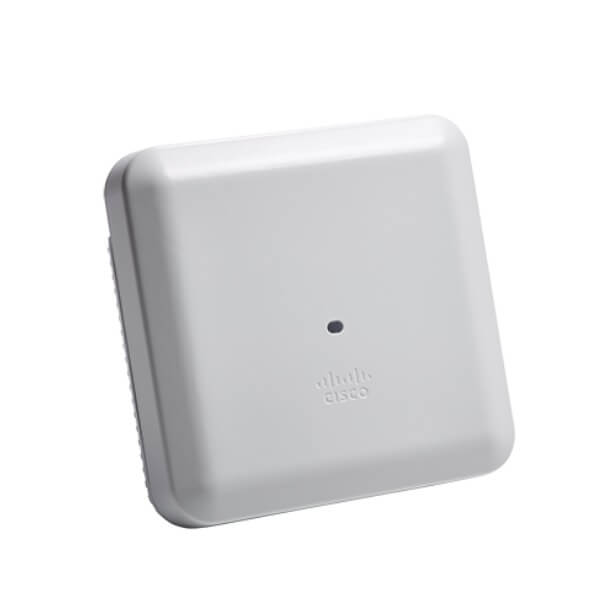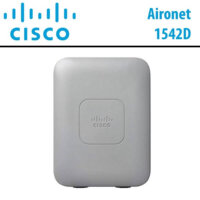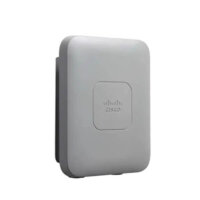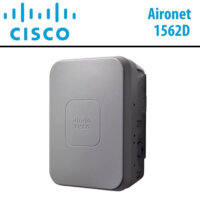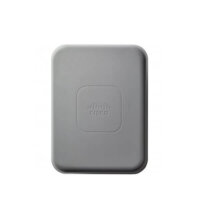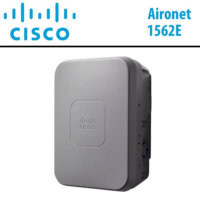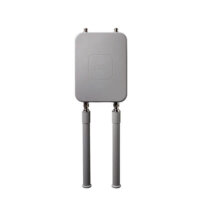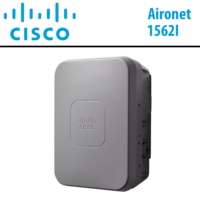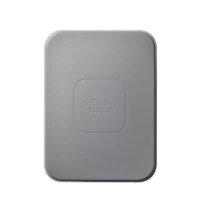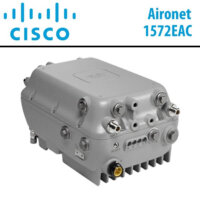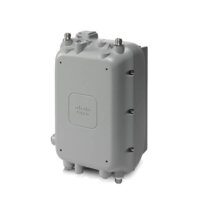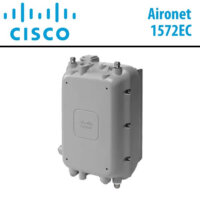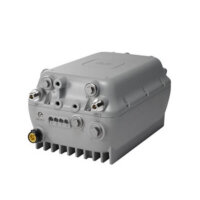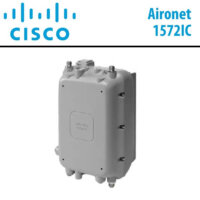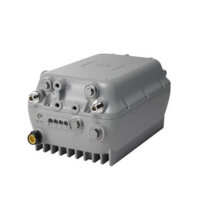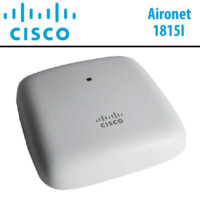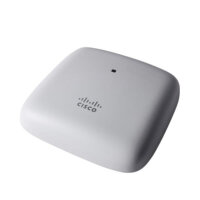Description
Cisco Aironet2800i Dubai
The Cisco Aironet2800i Dubai access point surpasses mere preparation for the new standard, offering unparalleled flexibility and versatility. Specifically designed for large enterprise organizations relying on Wi-Fi for customer engagement, the Cisco Aironet2800i Dubai operates as an intelligent, hands-off solution capable of making decisions based on end-device activities and usage. This automation allows you to redirect your time to other critical matters, with the assurance that your Wi-Fi network is optimized for peak performance. Packed with features and capabilities that have established Cisco as an industry leader, the Cisco Aironet2800i Dubai is priced ideally for managing wireless growth, capacity, and coverage gaps in densely populated indoor environments.
With Cisco WiFi Dubai, you can ensure the security of remote workers or micro-offices. Any Cisco Aironet or Catalyst access point can function as an OfficeExtend Access Point (OEAP), granting employees in home offices or temporary micro-offices access to the corporate SSID and network without the need for VPN setup or advanced technical expertise. The Cisco User Defined Network, a feature available in Cisco DNA Center, empowers IT to provide end-users with control over their wireless network partition within a shared network. This allows users to remotely and securely deploy their devices on this network, making it ideal for settings like university dormitories or extended hospital stays. Cisco User Defined Network ensures both device security and control, allowing each user to determine who can connect to their network.
The Wi-Fi 6 readiness dashboard, a new addition to the Assurance menu in Cisco DNA Center, scans the inventory of all devices on the network, verifying device, software, and client compatibility with the new Wi-Fi 6 standard. After the upgrade, advanced wireless analytics showcase performance and capacity gains resulting from the Wi-Fi 6 deployment. This tool proves invaluable for defining the upgrades needed in the wireless network, providing insights into access point distribution by protocol (802.11 ac/n/abg), wireless airtime efficiency by protocol, and offering granular performance metrics.
Features
High-density experience
Building on the Cisco Aironet heritage of RF excellence, the Cisco Aironet2800i Dubai run on a purpose-built, innovative chipset with a best-in-class RF architecture. This chipset provides a high-density experience for enterprise networks designed for mission-critical, high-performance applications.
802.11ac Wave 2 support
Cisco Aironet2800i Dubai provides a theoretical connection rate of up to 2.6 Gbps per radio which roughly double the rates offered by today’s high-end 802.11ac access points.
High Density Experience (HDX)
Best-in-class RF architecture, this Cisco WiFi Dubai provides high-performance coverage for a high density of client devices, giving the end user a seamless wireless experience. HDX includes features such as custom hardware in 802.11ac Wave 2 radios, Cisco CleanAir, ClientLink 4.0, cross-access point noise reduction, and an optimized client roaming experience.
Multiuser Multiple-Input Multiple-Output (MU‑MIMO) technology
Supporting three spatial streams, MU-MIMO enables Cisco Aironet2800i Dubai to split spatial streams between client devices, to maximize throughput.
Flexible Radio Assignment
Allows the access points to intelligently determine the operating mode of serving radios based on the RF environment. The access points can operate in the following modes:
- 4-GHz and 5-GHz mode: One radio will serve clients in 2.4-GHz mode, while the other serves clients in 5-GHz mode
- Dual 5-GHz mode: Both radios inside the access point operate on the 5-GHz band, maximizing the benefits of 802.11ac Wave 2 and increasing client device capacity.
- Security Monitoring and 5-GHz mode, one radio will serve 5-GHz clients, while the other is scanning the full spectrum for wIPS attackers, CleanAir interferers, and rogue devices.
Dual 5-GHz radio support
Cisco Aironet2800i Dubai enables both radios to operate in 5-GHz client serving mode, allowing an industry-leading 5.2 Gbps (2 x 2.6 Gbps) over-the-air speeds while increasing client capacity.
Smart antenna connector
An intelligent second physical antenna connector is included on Cisco Aironet2800i models with an external antenna. This connector provides advanced network design flexibility for high-density and large open-area environments such as auditoriums, convention centers, libraries, cafeterias, and arenas/stadiums, allowing two sets of antennas to be connected and active on a single access point.
160-MHz channel support
This Wifi Dubai supports channels up to 160 MHz wide, Dynamic Bandwidth Selection allows the access point to dynamically switch between 20-, 40-, 80-, and 160-MHz channels, depending on the RF channel conditions, providing the industry’s best-performing wireless network.
Optimized access point roaming
Helps ensure that client devices associate with the access point in their coverage range that offers the fastest data rate available.
Zero-impact Application Visibility and Control
Cisco Aironet2800i Dubai uses dedicated hardware acceleration to improve the performance of line-speed applications such as Application Visibility and Control.
Auto Link Aggregation (LAG) support
802.3ad (LACP) compliant, allowing both Gigabit Ethernet interfaces to automatically LAG, increasing overall throughput to the access point.
ClientLink 4.0
Cisco ClientLink 4.0 technology to improve downlink performance to all mobile devices, including one-, two-, and three-spatial-stream devices on 802.11a/b/g/n/ac while improving battery life on mobile devices such as smartphones and tablets.
CleanAir 160 MHz
With Cisco CleanAir technology, enhanced with 160-MHz channel support, Cisco Aironet2800i Dubai provides proactive, high-speed spectrum intelligence across 20-, 40-, 80-, or 160-MHz-wide channels to combat performance problems due to wireless interference
Cisco Mobility Express
Flexible deployment mode through the Cisco Mobility Express Solution is ideal for medium-sized deployments and can support up to 100 access points. Easy setup allows the Cisco Aironet2800i Access Points to be deployed on networks without a physical controller.
Specifications
| Software | Cisco Unified Wireless Network Software Release 8.2.111.0 or later
Cisco IOS XE Software Release 16.3 |
|
| Supported wireless LAN controllers | Cisco 2500 Series Wireless Controllers, Cisco 3500 Series Wireless Controllers, Cisco Wireless Controller Module for ISR G2, Cisco Wireless Services Module 2 (WiSM2) for Catalyst 6500 Series Switches, Cisco 5500 Series Wireless Controllers, Cisco Flex 7500 Series Wireless Controllers, Cisco 8500 Series Wireless Controllers, Cisco 9800 Series Wireless Controllers, Cisco Virtual Wireless Controller
Cisco Catalyst 3850 Series Switches, Cisco Catalyst 3650 Series Switches Cisco Mobility Express |
|
| 802.11n version 2.0 (and related) capabilities |
|
|
| 802.11ac Wave 1 capabilities |
|
|
| 802.11ac Wave 2 capabilities |
|
|
| Integrated antenna | Flexible radio (either 2.4 GHz or 5 GHz)
2.4 GHz, gain 4 dBi, internal antenna, omnidirectional in azimuth 5 GHz, gain 6 dBi, internal directional antenna, elevation plane beamwidth 90° Dedicated 5-GHz radio 5 GHz, gain 5 dBi, internal antenna, omnidirectional in azimuth |
|
| External antenna (sold separately) | 2802e Series access points are certified for use with antenna gains up to 6 dBi (2.4 GHz and 5 GHz)
Cisco offers the industry’s broadest selection of antennas, delivering optimal coverage for a variety of deployment scenarios |
|
| Smart antenna connector | Available on the 2802e Series access points only
Requires the AIR-CAB002-DART-R= 2 ft smart antenna connector to RP-TNC connectors to connect a second antenna to the access point Required when running the flexible radio as either a second 5-GHz serving radio or Wireless Security Monitoring radio |
|
| Interfaces | 2802I/E
2x 100/1000BASE-T autosensing (RJ-45) Management console port (RJ-45) USB 2.0 (enabled via future software) |
|
| Indicators | Status LED indicates boot loader status, association status, operating status, boot loader warnings, boot loader errors | |
| Dimensions (W x L x H) | Access point (without mounting brackets): 2802I: 8.66” x 8.68” x 2.17”, 2802E: 8.66” x 8.77” x 2.50” | |
| Weight | Cisco Aironet 2802i
3.53 lb (1.6 kg) Cisco Aironet 2802e 4.6 lb (2.09 kg) |
|
| Input power requirements | 802.3at PoE+, Cisco Universal PoE (Cisco UPOE )
802.3at power injector (AIR-PWRINJ6=) |
|
| Power draw | 22.5W at the PSE (20W at the PD) with all features enabled except for the USB 2.0 port
26.5W at the PSE (23W at the PD) with the USB 2.0 port enabled |
|
| Environmental |
|
|
| System memory | 1024 MB DRAM
256 MB flash |
|
| Warranty | Limited lifetime hardware warranty | |
| Available transmit power settings | 2.4 GHz
23 dBm (200 mW) 20 dBm (100 mW) 17 dBm (50 mW) 14 dBm (25 mW) 11 dBm (12.5 mW) 8 dBm (6.25 mW) 5 dBm (3.13 mW) 2 dBm (1.56 mW) |
5 GHz
23 dBm (200 mW) 20 dBm (100 mW) 17 dBm (50 mW) 14 dBm (25 mW) 11 dBm (12.5 mW) 8 dBm (6.25 mW) 5 dBm (3.13 mW) 2 dBm (1.56 mW) |
| Frequency band and 20-MHz operating channels | A (A regulatory domain):
2.412 to 2.462 GHz; 11 channels 5.180 to 5.320 GHz; 8 channels 5.500 to 5.700 GHz; 8 channels (excludes 5.600 to 5.640 GHz) 5.745 to 5.825 GHz; 5 channels B (B regulatory domain): 2.412 to 2.462 GHz; 11 channels 5.180 to 5.320 GHz; 8 channels 5.500 to 5.720 GHz; 12 channels 5.745 to 5.825 GHz; 5 channels C (C regulatory domain): 2.412 to 2.472 GHz; 13 channels 5.745 to 5.825 GHz; 5 channels D (D regulatory domain): 2.412 to 2.462 GHz; 11 channels 5.180 to 5.320 GHz; 8 channels 5.745 to 5.825 GHz; 5 channels E (E regulatory domain): 2.412 to 2.472 GHz; 13 channels 5.180 to 5.320 GHz; 8 channels 5.500 to 5.700 GHz; 8 channels (excludes 5.600 to 5.640 GHz) F (F regulatory domain): 2.412 to 2.472 GHz; 13 channels 5.250 to 5.350 GHz; 4 channels 5.725 to 5.825 GHz; 4 channels G (G regulatory domain): 2.412 to 2.472 GHz; 13 channels 5.745 to 5.825 GHz; 5 channels H (H regulatory domain): 2.412 to 2.472 GHz; 13 channels 5.150 to 5.350 GHz; 8 channels 5.745 to 5.825 GHz; 5 channels |
I (I regulatory domain):
2.412 to 2.472 GHz; 13 channels 5.180 to 5.320 GHz; 8 channels K (K regulatory domain): 2.412 to 2.472 GHz; 13 channels 5.180 to 5.320 GHz; 8 channels 5.500 to 5.620 GHz; 7 channels 5.745 to 5.805 GHz; 4 channels N (N regulatory domain): 2.412 to 2.462 GHz; 11 channels 5.180 to 5.320 GHz; 8 channels 5.745 to 5.825 GHz; 5 channels Q (Q regulatory domain): 2.412 to 2.472 GHz; 13 channels 5.180 to 5.320 GHz; 8 channels 5.500 to 5.700 GHz; 11 channels R (R regulatory domain): 2.412 to 2.472 GHz; 13 channels 5.180 to 5.320 GHz; 8 channels 5.660 to 5,805 GHz; 7 channels S (S regulatory domain): 2.412 to 2.472 GHz; 13 channels 5.180 to 5.320 GHz; 8 channels 5.500 to 5.700 GHz;, 11 channels 5.745 to 5.825 GHz; 5 channels T (T regulatory domain): 2.412 to 2.462 GHz; 11 channels 5.280 to 5.320 GHz; 3 channels 5.500 to 5.700 GHz; 8 channels (excludes 5.600 to 5.640 GHz) 5.745 to 5.825 GHz; 5 channels Z (Z regulatory domain): 2.412 to 2.462 GHz; 11 channels 5.180 to 5.320 GHz; 8 channels 5.500 to 5.700 GHz; 8 channels (excludes 5.600 to 5.640 GHz) 5.745 to 5.825 GHz; 5 channels |
| Maximum number of nonoverlapping channels | 2.4 GHz
802.11b/g: 20 MHz: 3 802.11n: 20 MHz: 3 |
5 GHz
802.11a: 20 MHz: 25 FCC, 16 EU 802.11n: 20 MHz: 25 FCC, 16 EU 40 MHz: 12 FCC, 7 EU 80 MHz: 6 FCC, 3 EU 160 MHz 2 FCC, 1 EU |
| Note: This varies by regulatory domain. Refer to the product documentation for specific details for each regulatory domain. | ||
| Compliance standards |
|
|
